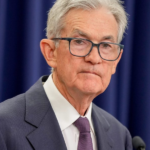“The real surprise is what the Fed’s opinion is on the current state of the economy,” Hiesinger told Fortune. “They’re signaling some weakness in the future which means that they’re looking to do more cuts.”
“This was a risk management cut, with the Fed attempting to move towards neutral from a restrictive policy stance, as the risk to the labor market has increased,” said Mukherjee in a statement.
Fed Chair Jerome Powell, in his press conference following the announcement, seemed less concerned about the possibility of rising prices in light of the slowdown in the economy and labor market, he said.
“This policy set up is bullish for bonds, bearish for the dollar and neutral for equities in the near term,” added Mukherjee.
Schurmeier said Miran’s dissent was unsurprising, but he expected potentially two additional dissents, which to him underscores the marginal nature of debates over policy and the uncertainty among Fed officials about the pace of easing. He said the Fed is maintaining flexibility in its outlook and that the data in the Fed’s Summary of Economic Projections (SEP) are fluid assessments rather than firm promises.









